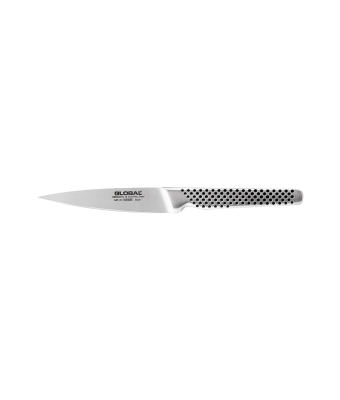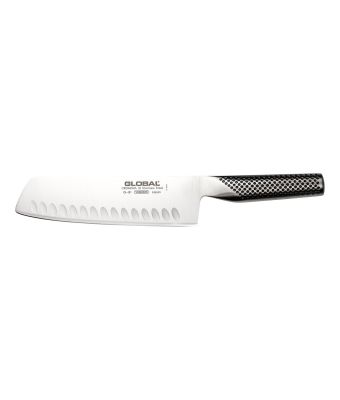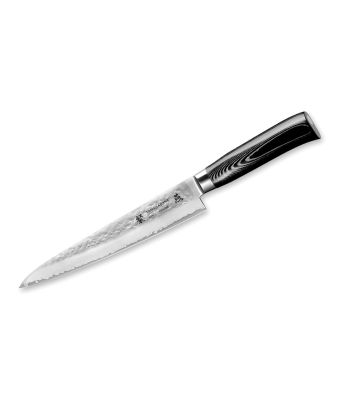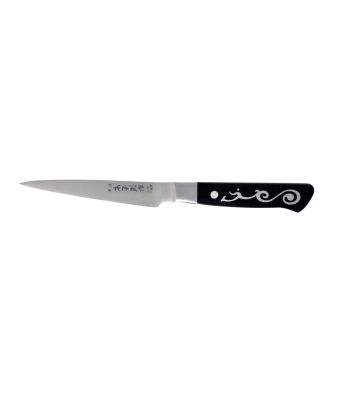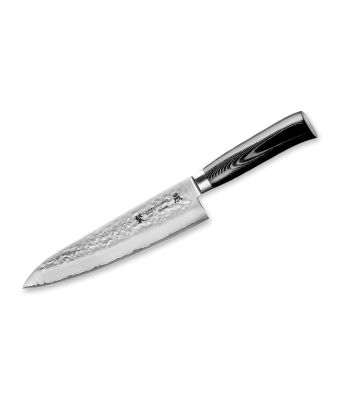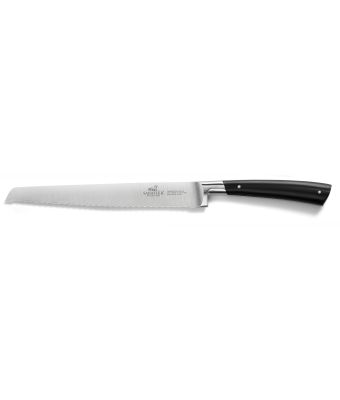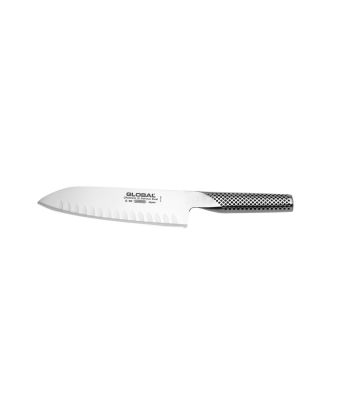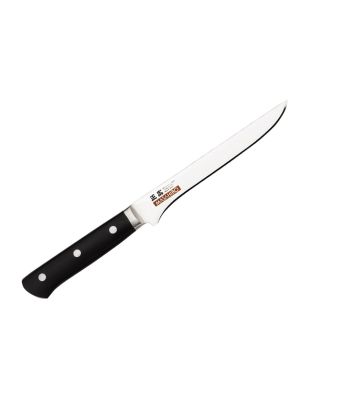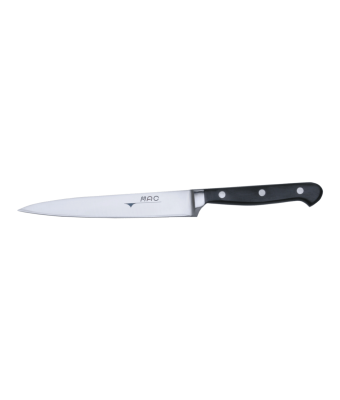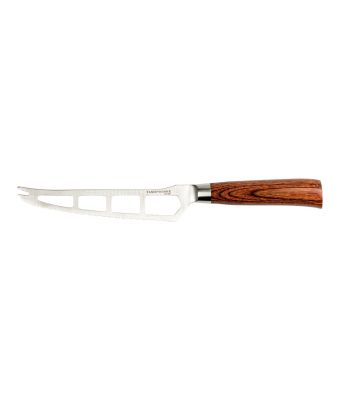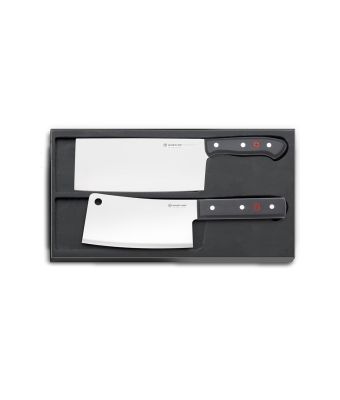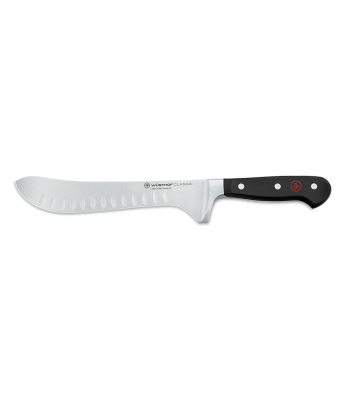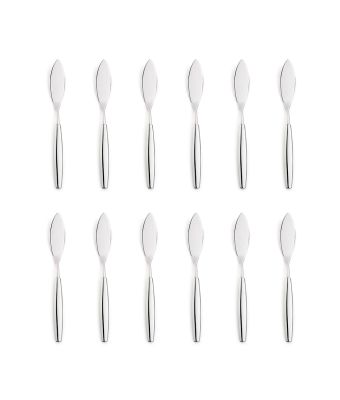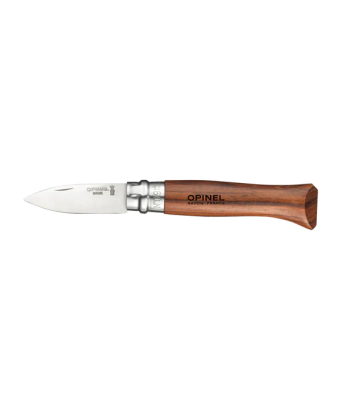Types of Knives: A Comprehensive Guide
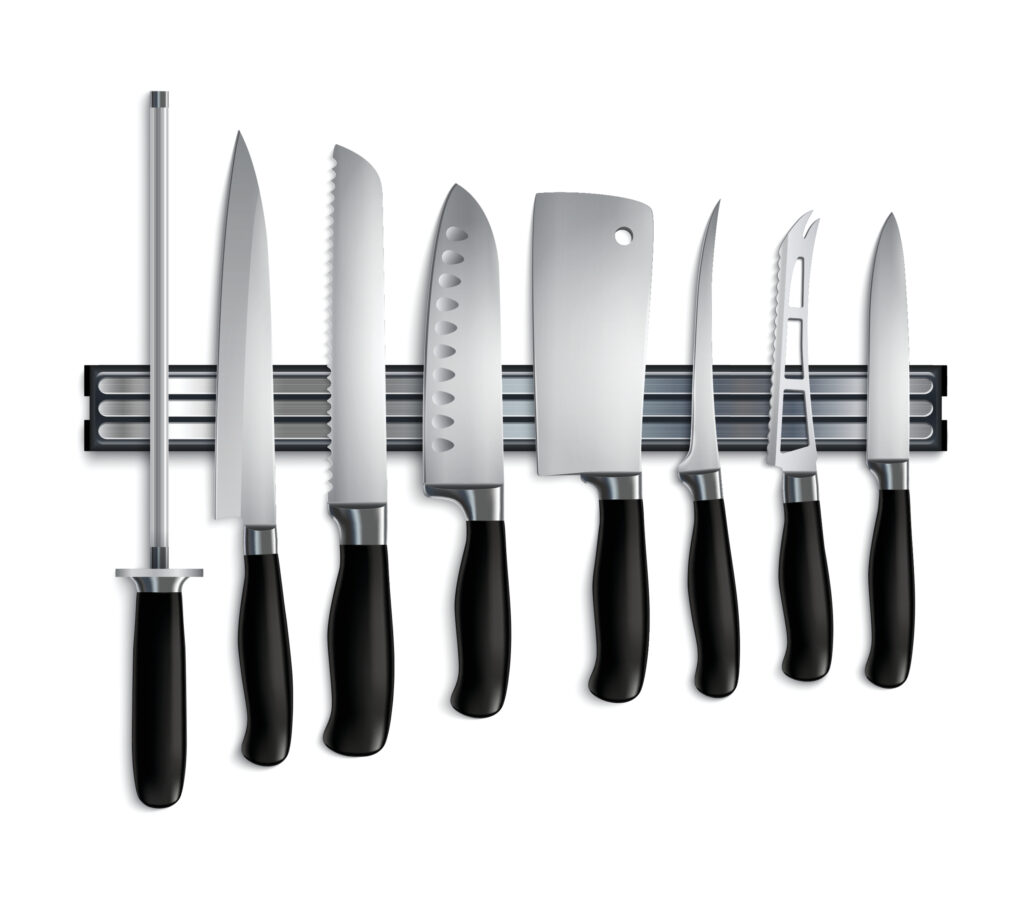
Kitchen knives are among the most essential tools in a chef's arsenal. In any professional chef's kitchen, you'll likely see a wide range of knives, varying in size, shape, and function, waiting to be used.
Regardless of how keen a chef you are, you need to prepare meals safely. To do this, you need to know which knives are most suitable for the various tasks you'll undertake in the kitchen.
We've put together this guide to help you, your utensils and your ingredients work together in perfect harmony.
Here, we explore the different types of kitchen knives and what they should be used for so you can focus on cooking up some magic.
But first, let's explore the reasons you need to choose the best knife for the job.
Five Reasons You Need to Pick the Right Knife for the Job
Choosing the right kitchen knife is essential for both safety and efficiency in the kitchen. Each knife is designed with specific tasks in mind, and using the wrong knife can lead to frustration, imprecise cuts, or even injury.
Here are five key reasons why selecting the right kitchen knife is so important:
1. Precision and Control
The right knife allows you to work with greater precision. Whether you're finely chopping herbs or slicing a thick steak, using the correct knife ensures clean, uniform cuts. A knife that is too big or too small for the task can make it difficult to maintain control, leading to uneven results and a higher risk of slipping.
2. Efficiency
Every knife has a specialised design to perform specific tasks more efficiently. For example, using a chef's knife to cut bread can damage the blade, while using a bread knife for slicing vegetables may create jagged, uneven edges. The right knife saves you time and effort, making food preparation smoother and more enjoyable.
3. Safety
Safety is a top priority in any kitchen, and using the right knife is crucial in preventing accidents. A knife that isn't suitable can slip or require more force, increasing the likelihood of injury. Additionally, dull or inappropriate knives can lead to unnecessary strain on your hand and wrist, causing fatigue and discomfort over time.
4. To Preserve Ingredients
A sharp, well-designed knife makes your work easier and helps maintain the quality of the ingredients. For instance, a serrated blade is perfect for cutting bread without squashing it, while a thin, sharp fillet knife can remove delicate fish skin without damaging the flesh.
Choosing the right knife ensures that your ingredients are handled carefully, preserving their appearance and flavour.
5. To Protect Your Knives
Using a knife for its intended purpose also extends the life of your blades. For example, chopping through bones with a chef's knife can dull or even chip the blade, whereas a cleaver is designed to handle such tough tasks.
Using each knife properly reduces wear and tear, meaning your knives will stay sharper for longer and perform better over time.
What are the Different Types of Kitchen Knives?
Chef's Knife
This knife is the most essential in the kitchen. It's often known as a cook's knife and is typically one of the largest knives you will see in a kitchen setting.
The blade of a chef's knife can be between 6 and 14 inches in length and is often curved to a point to allow the fast rocking motion of chopping or mincing ingredients. They are also quite thick, around 1½ inches wide, and often don't boast a serrated edge - having a sharp, clean edge instead.
There are generally two styles of chef’s knives that you will come across in various kitchens: German-style and French-style.
German-style knives are easily identified by the curvature of the blade, which is a much more continuous curve than the French-style, which has a much straighter blade and only curves to the tip right at the end of the knife. Neither knife is known to be better than the other, so whichever you choose is down to personal preference.
This knife is commonly used as an 'all-purpose' knife in the kitchen, owing to its versatility and the blade's height. Many professionals use their chef's knife to slice meat, chop vegetables, and crush and dice ingredients. In fact, almost any aspect of chopping, slicing, or dicing can be adequately completed with the chef's knife.
Many people who don't have culinary training will use a chef's knife by holding the handle with all four fingers and their thumb wrapped around the handle. While this isn't incorrect, you will have more precise control over the blade by using what is known as the 'pinch grip'.
This requires the user to hold the blade at the top with their thumb and forefinger just in front of the finger guard. The middle finger is then curled under the bolster (the area between the handle and the tang) of the knife and around the tang. This gives you the best control of the knife.
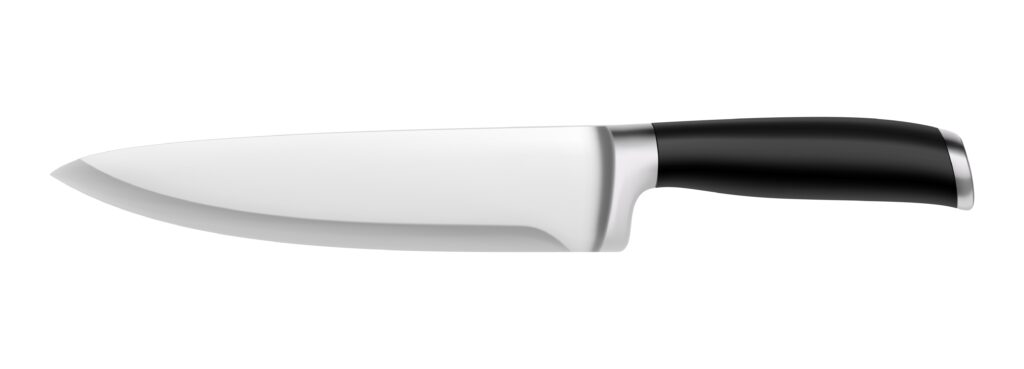
Paring Knife
One of the smallest, simplest knives in the kitchen, the paring knife is perfect for those smaller tasks that the chef's knife is too big for.
It has a thin blade between 3 and 4 inches long and a very pointed tip at the end, which is ideal for paring (or skinning) fruit and vegetables. Its small size makes it incredibly versatile and the go-to knife for smaller, more intricate tasks, such as trimming off excess fat from meats.
There are three styles of paring knife: the sheep's foot, spear tip, and bird's beak.
Utility Knife
Often described as a mini chef's knife, the utility knife is versatile and is frequently used when the chef's knife is too big. These knives usually have a 4 to 7-inch blade and come in straight and serrated versions. The straight blade is ideal for slicing fruits and vegetables, while the serrated version is perfect for tougher foods.
Boning Knife
As the name suggests, the boning knife is primarily used for separating meat from bones, though it can also be used for trimming and peeling vegetables. Boning knives feature thin, flexible blades to work around bones efficiently. Firmer blades suit tougher meats like beef, while more flexible blades work better for softer meats like chicken or fish.
Bread Knife
With a long, serrated blade measuring between 6 and 10 inches, bread knives are designed to slice through soft bread and crusty loaves without crushing it. The size of the serrated edges varies, with smaller serrations for gentler cutting and larger serrations for tougher crusts. Scalloped edges are ideal for soft bread, while straight serrations work best for tough crusts like baguettes.

Carving Knife
Carving knives have long, thin blades ranging from 8 to 15 inches, making them perfect for slicing cooked meats. They are distinguished from chef's knives by their slender design, which offers precision when slicing roasted meats like turkey or ham.
Fillet Knife
A fillet knife is specifically designed for filleting fish. Its thin, flexible blade allows precise cuts along the backbone and rib cage, making removing the skin and bones from delicate fish easy. Fillet knives usually have a blade length between 6 and 11 inches, which is more flexible than a boning knife.
Santoku Knife
The Santoku knife is a famous Japanese knife, often used as an alternative to the traditional chef's knife. Its name means "three virtues," referring to slicing, dicing, and mincing.
Santoku knives have a shorter, straighter blade (usually 5-7 inches) with a slight curve at the tip. They are excellent for fine slicing, especially with vegetables, and are known for their lightweight and agile handling.
Read more in our blog: Types of Japanese Knives: A Complete Guide.
Butcher's Knife
The butcher knife, designed for heavy-duty cutting tasks, is typically used for slicing, trimming, and portioning large cuts of meat. Its long, curved blade allows smooth, sweeping cuts through meat, bones, and cartilage. The sturdy design makes it indispensable in professional kitchens and butcher shops.
Cheese Knife
Cheese knives come in various shapes and sizes, each designed for different types of cheese. A knife with holes in the blade prevents the cheese from sticking for soft cheeses, while harder cheeses require a more robust blade. Some cheese knives also feature forked tips for easy serving.
Cleaver
Easily the largest and heaviest knife in the kitchen, the meat cleaver is used for chopping through meat and bones. It can also be used for slicing through tough ingredients like pumpkins and for crushing garlic. The wide, rectangular blade provides power and control for heavy-duty tasks.
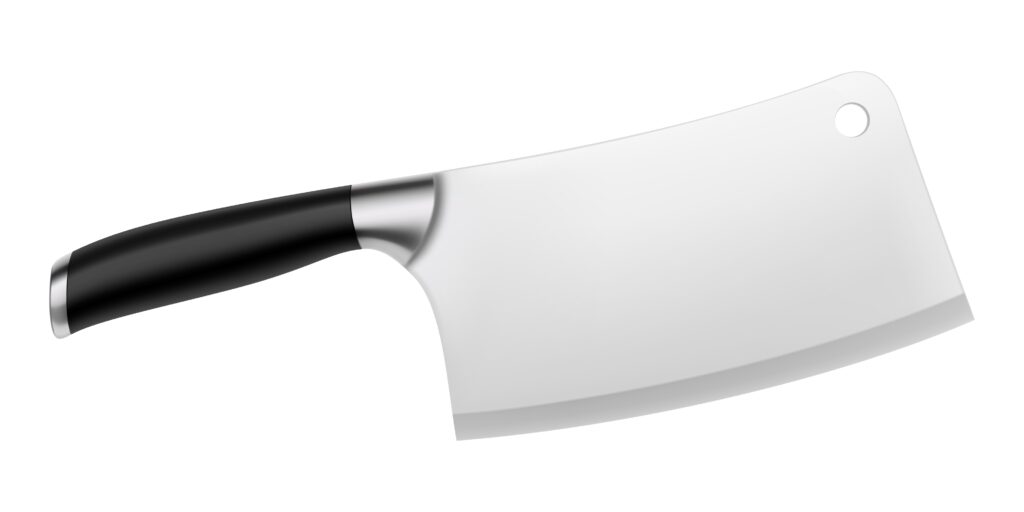
Fish Knife
Fish knives are specifically designed for eating fish rather than preparing it. They usually have a wide, flat blade with a slightly pointed end, perfect for lifting the skin or removing bones while eating. Fish knives are most commonly used at the dining table.
Oyster Knife
An oyster knife is a short, sturdy knife with a blunt tip to shuck (open) oysters. The blade is typically around 2 to 3 inches long, and its strength is designed to pry open oyster shells without breaking them. Oyster knife handles are usually rounded and non-slip to offer a firm grip.
Vegetable Knife
A vegetable knife is designed for precision when slicing, dicing, or chopping vegetables. These knives often have straight-edged blades, perfect for clean cuts through produce without tearing. Vegetable knives come in various sizes, but many are smaller and lighter than chef's knives, offering more control for delicate tasks like peeling or fine chopping.
What is the Best Type of Metal for a Kitchen Knife?
The type of metal used for the blade is a critical factor when choosing a kitchen knife. The best materials for kitchen knives generally fall into three categories: stainless steel, carbon steel, and high-carbon stainless steel.
Stainless Steel
Known for its resistance to rust and corrosion, stainless steel is a popular choice for kitchen knives. While it's easy to maintain, it doesn't hold an edge as long as carbon steel and may require more frequent sharpening.
Carbon Steel
Many professional chefs prefer Carbon steel knives because they are easier to sharpen and hold their edge longer. However, they are more prone to rust and discolouration, requiring careful cleaning and maintenance.
High-Carbon Stainless Steel
This material combines the best of both stainless and carbon steel. High-carbon stainless steel knives are rust-resistant and durable while holding a sharp edge for a long time. They are often considered the ideal balance for both professionals and home cooks.
Other metals like ceramic are also used but are more brittle and prone to chipping.
What to Look for When Buying a Kitchen Knife
When buying a kitchen knife, several factors should guide your decision:
- Blade Material: As mentioned, the type of metal (stainless steel, carbon steel, or high-carbon stainless steel) influences the knife's durability, sharpness, and maintenance requirements.
- Balance and weight: A well-balanced knife is easier to control. Hold the knife to ensure it feels comfortable and evenly distribute weight between the handle and blade.
- Blade length: The blade's length should suit your tasks. For example, chef's knives usually range between 8 and 10 inches, ideal for general kitchen use. Smaller knives, like paring knives, are great for more intricate tasks.
- Handle material: Handles can be made from plastic, wood, or composite materials. Make sure the handle feels comfortable and secure in your hand and does not risk slipping.
- Grip style: Some handles are ergonomically designed to enhance comfort and reduce fatigue. Test the knife with the grip style you prefer, such as the pinch grip.
- Maintenance: Consider how much maintenance you are willing to perform. Some knives, like carbon steel, need more care to avoid rust, while stainless steel requires less attention.
- Price: While investing in a high-quality knife is often worth it, consider how often you will use it and balance the cost with your needs.
At Kitchen Knives, we're here to help you make the best choice when finding the best tools – whether you're a professional chef or simply passionate about cooking at home. If you have any questions, please get in touch with our team.
More from Kitchen Knives
For all of your cooking needs, look no further than Kitchen Knives. Our leading range includes cookware, bakeware, cutlery, and a whole host of other cooks’ tools, like spatulas, graters and peelers.
Want to make the most of your knives and utensils? Take a look at the Kitchen Knives blog. Here, you’ll find guides on the best knives to cut vegetables with, the knives you need to cut fruit, the best way to store kitchen knives, and more.
In this guide:
- Five Reasons You Need to Pick the Right Knife for the Job
- What are the Different Types of Kitchen Knives
- What is the Best Type of Metal for a Kitchen Knife?
- What to Look for When Buying a Kitchen Knife
- More from Kitchen Knives

